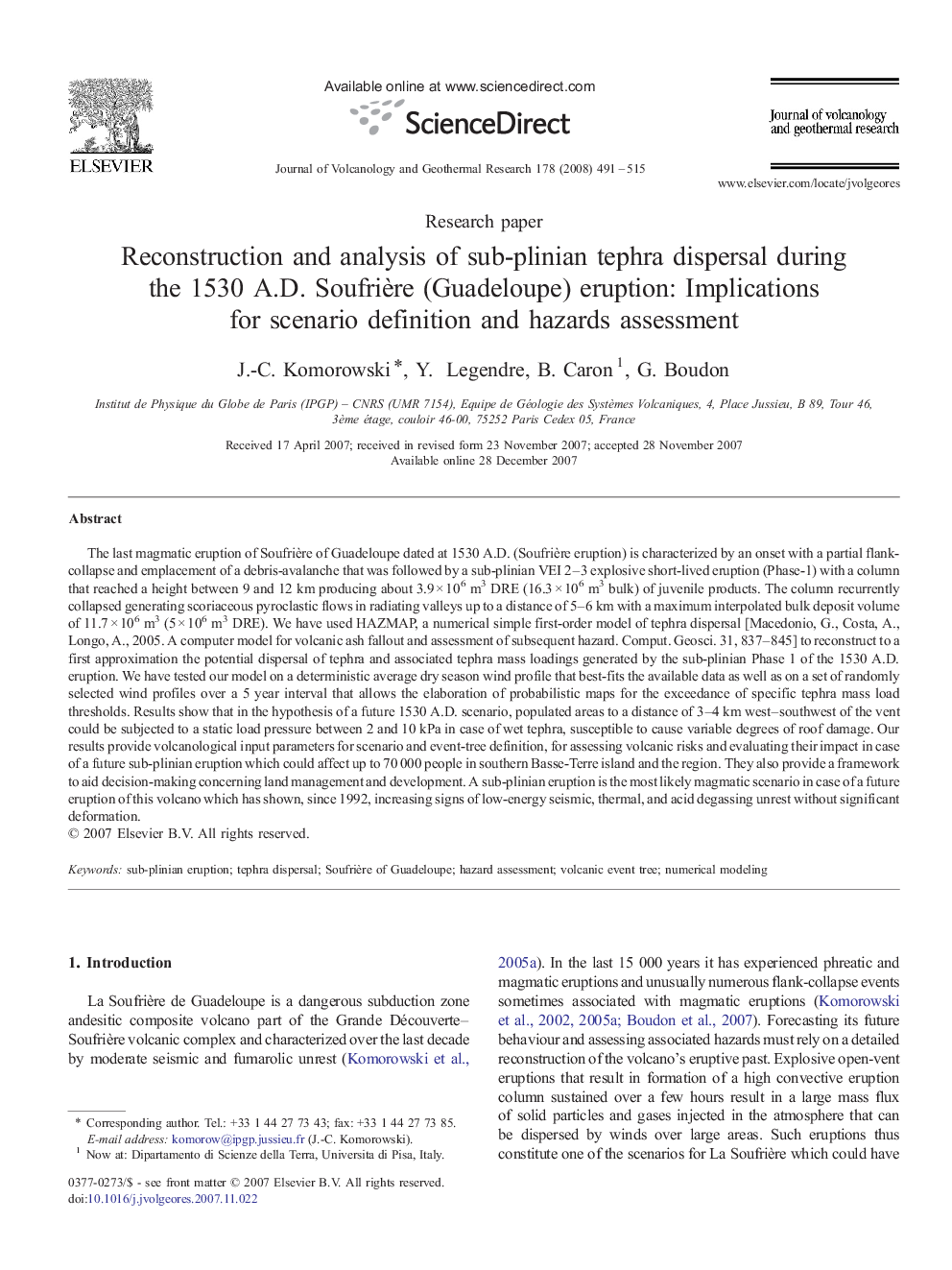| Article ID | Journal | Published Year | Pages | File Type |
|---|---|---|---|---|
| 4713434 | Journal of Volcanology and Geothermal Research | 2008 | 25 Pages |
The last magmatic eruption of Soufrière of Guadeloupe dated at 1530 A.D. (Soufrière eruption) is characterized by an onset with a partial flank-collapse and emplacement of a debris-avalanche that was followed by a sub-plinian VEI 2–3 explosive short-lived eruption (Phase-1) with a column that reached a height between 9 and 12 km producing about 3.9 × 106 m3 DRE (16.3 × 106 m3 bulk) of juvenile products. The column recurrently collapsed generating scoriaceous pyroclastic flows in radiating valleys up to a distance of 5–6 km with a maximum interpolated bulk deposit volume of 11.7 × 106 m3 (5 × 106 m3 DRE). We have used HAZMAP, a numerical simple first-order model of tephra dispersal [Macedonio, G., Costa, A., Longo, A., 2005. A computer model for volcanic ash fallout and assessment of subsequent hazard. Comput. Geosci. 31, 837–845] to reconstruct to a first approximation the potential dispersal of tephra and associated tephra mass loadings generated by the sub-plinian Phase 1 of the 1530 A.D. eruption. We have tested our model on a deterministic average dry season wind profile that best-fits the available data as well as on a set of randomly selected wind profiles over a 5 year interval that allows the elaboration of probabilistic maps for the exceedance of specific tephra mass load thresholds. Results show that in the hypothesis of a future 1530 A.D. scenario, populated areas to a distance of 3–4 km west–southwest of the vent could be subjected to a static load pressure between 2 and 10 kPa in case of wet tephra, susceptible to cause variable degrees of roof damage. Our results provide volcanological input parameters for scenario and event-tree definition, for assessing volcanic risks and evaluating their impact in case of a future sub-plinian eruption which could affect up to 70 000 people in southern Basse-Terre island and the region. They also provide a framework to aid decision-making concerning land management and development. A sub-plinian eruption is the most likely magmatic scenario in case of a future eruption of this volcano which has shown, since 1992, increasing signs of low-energy seismic, thermal, and acid degassing unrest without significant deformation.
